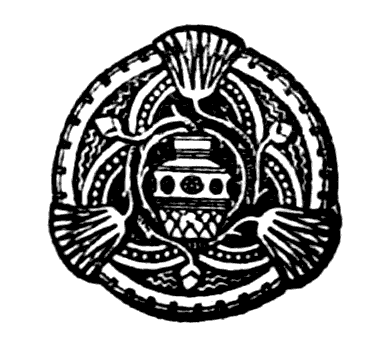NIEBUHR’S LECTURES
ON
ROMAN HISTORY.
Vol. I.
NIEBUHR’S LECTURES
ON
ROMAN HISTORY
Translated from the Edition of Dr. M. Isler,
By H. M. CHEPMELL, M.A., AND F. DEMMLER, Ph.D.

IN THREE VOLUMES.—VOL. I.
London:
CHATTO & WINDUS, PICCADILLY.
1875.
[Pg v]
PREFACE.
It has been the object of the translators of this work, to give afaithful version of the original into English without any additions oftheir own. In so doing, they follow in the steps of the German editor,Dr. Isler, who likewise confined himself to “the purely philologicaltask of producing a genuine text.”
Niebuhr twice delivered a course of lectures on Roman History atBonn,—the first in the winter term of 1826-27, and the second in thewinter of 1828-29, and in the following summer. In the latter of these,he went down to the fall of the Western Empire, whereas the course of1826 was broken off at the times of Sylla, owing to his having enteredrather fully into critical disquisitions.
The form in which these Lectures are here given, is that of the latercourse. Everything, however, that was important or interesting in theearlier series, has been inserted. Dr. Isler moreover assures us, thatin his compilation, not a thought, and indeed hardly a word is to befound, which Niebuhr had not really spoken. As Niebuhr lectured quiteextemporaneously, the only sources for this work are the notes taken byhis hearers, several of which have been collated to ensure correctness.
[Pg vi]
Although, from the nature of things, the result cannot be looked uponas a finished and elaborate history, yet, no one who reads it can failto be struck with its great value, even for those who are acquaintedwith Niebuhr’s other writings; for as Dr. Isler remarks, there are manythings set forth in these Lectures more clearly, more precisely, andmore at length than in the greater work. Of this, we may find examplesin the introduction on the sources of Roman History, and in the accountof the Saturnian verse. They also give us the last opinions of Niebuhr.The first volume of his Roman History dates most of it from the year1826, and the additions in the third edition from 1827; but a mindlike his was always active, and he went on with his investigations,even when all the leading points were settled. In several instances,fragments of ancient authors which had newly come to light, have ledhim to modify his views. This is particularly the case with that partof the Roman History treated in his third volume, which had beenoriginally arranged for the press in 1812, and therefore would, if hehad been spared to revise it, have undergone many qualifications.
Royal Military College, Sandhurst.
[Pg vii]